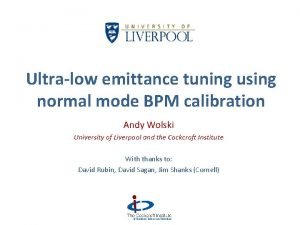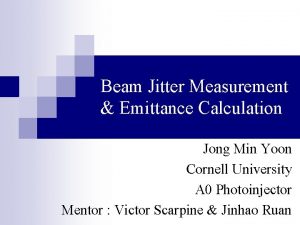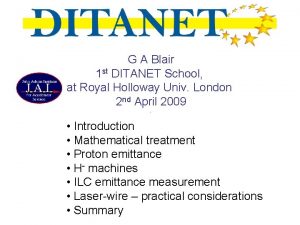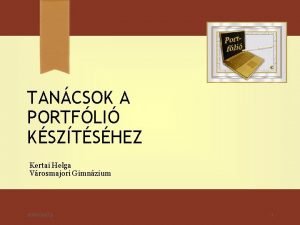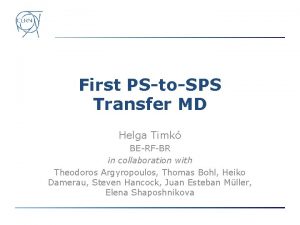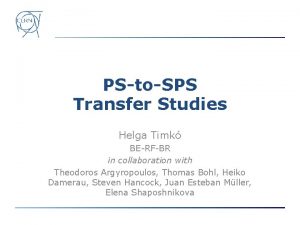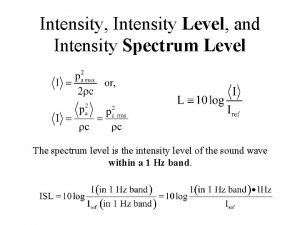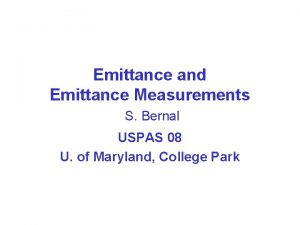Emittance and intensity dependence of PStoSPS transfer Helga







- Slides: 7

Emittance and intensity dependence of PS-to-SPS transfer Helga Timkó BE-RF-BR in collaboration with Theodoros Argyropoulos, Thomas Bohl, Heiko Damerau, Steven Hancock, Juan Esteban Müller, Elena Shaposhnikova

Measurement conditions § Dedicated cycle: § § § LHCMDION Single batch, 50 ns spaced LHC-type beam, 36 bunches Intensity: ~1. 6 1011 ppb, unless stated otherwise Varying the PS rotation timings t 40 MHz and t 80 MHz SPS voltage as usual SPS FB is shortened to 1260 ms SPS acceleration ramp only until at 30 Ge. V § Bunch length: § at PS ejection § Transmission: § (intensity at 30 Ge. V) / (injected intensity) 2 nd August 2012 SPSU-BD Meeting 2

Reminder Gain: TOP ≈ 94. 8 % (1+2 cav’s) TMAX = 97. 7 % (2+2 cav’s) 2 nd August 2012 SPSU-BD Meeting Highest loss reduction was achieved when switching on the spare 40 MHz cavity 3

Why did we not see an improvement earlier? § Reproducing last year’s MD results: optimising t 80 MHz based on τ doesn’t help; need to optimise t 40 MHz as well 2 nd August 2012 SPSU-BD Meeting 4

Best settings: 2+2 cavities § Even with an emittance increased by 50 %, we can achieve similar transmission to currently operational settings! 2 nd August 2012 SPSU-BD Meeting 5

Intensity dependence § About ~ 15 % intensity margin for the same transmission 2 nd August 2012 SPSU-BD Meeting 6

Conclusions § We have performed 7 MDs with a dedicated cycle, 1 batch § Results are reproducible and consistent with simulations § Preferred settings: • V 40 MHz = 600 k. V, V 80 MHz = 600 k. V, t 40 MHz = 130 μs, t 80 MHz = 90 μs • Gain: transmission 94. 8 97. 7 %, losses 5. 2 2. 3 % § We understand now the results of previous years and know what we have to do differently § With the new settings, we gain also a significant emittance and intensity margin § Our studies with the test cycle are now complete (for Q 26) § Need to test the new scheme with 4 batches, filling-type scenario 2 nd August 2012 SPSU-BD Meeting 7
